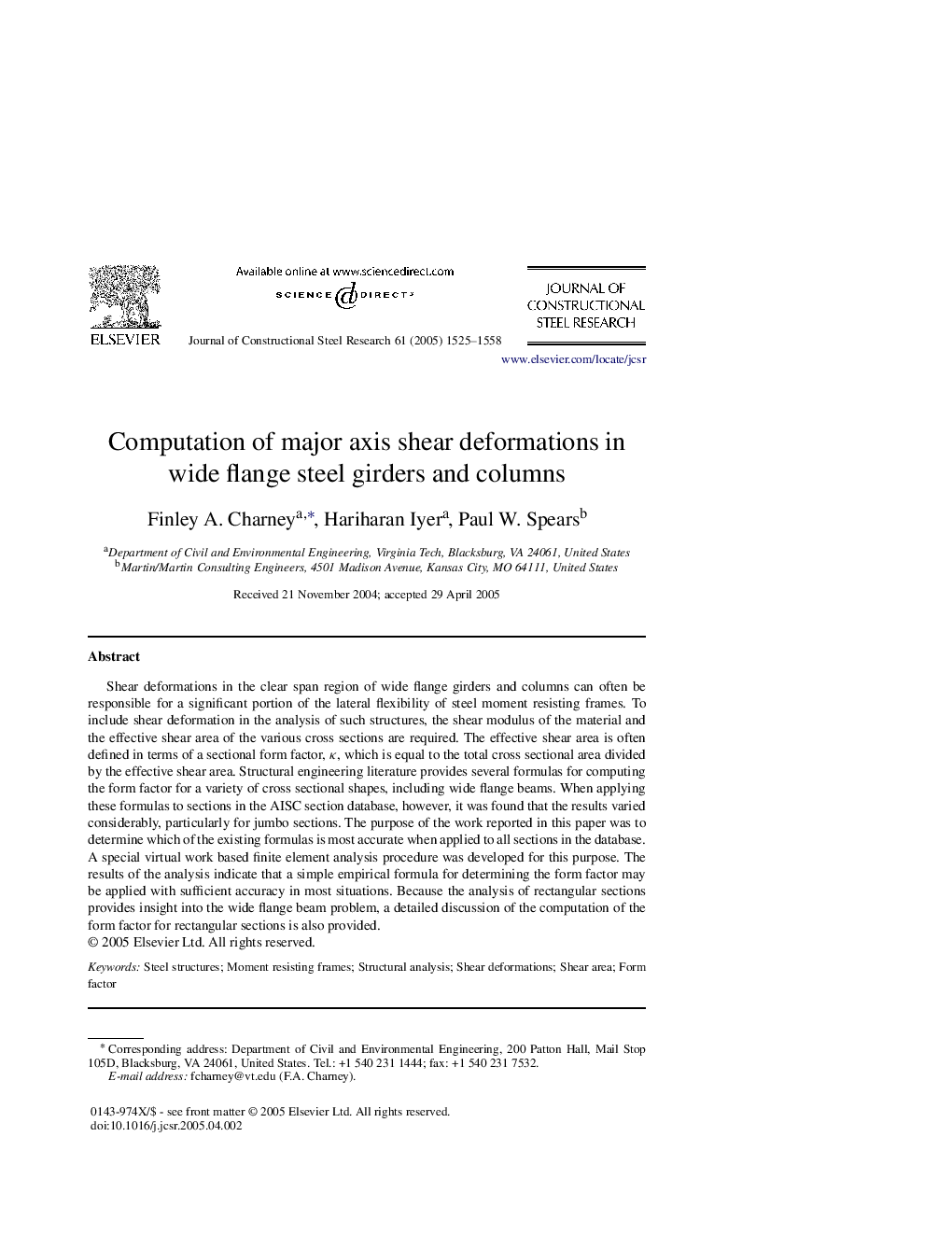| Article ID | Journal | Published Year | Pages | File Type |
|---|---|---|---|---|
| 10288695 | Journal of Constructional Steel Research | 2005 | 34 Pages |
Abstract
Shear deformations in the clear span region of wide flange girders and columns can often be responsible for a significant portion of the lateral flexibility of steel moment resisting frames. To include shear deformation in the analysis of such structures, the shear modulus of the material and the effective shear area of the various cross sections are required. The effective shear area is often defined in terms of a sectional form factor, κ, which is equal to the total cross sectional area divided by the effective shear area. Structural engineering literature provides several formulas for computing the form factor for a variety of cross sectional shapes, including wide flange beams. When applying these formulas to sections in the AISC section database, however, it was found that the results varied considerably, particularly for jumbo sections. The purpose of the work reported in this paper was to determine which of the existing formulas is most accurate when applied to all sections in the database. A special virtual work based finite element analysis procedure was developed for this purpose. The results of the analysis indicate that a simple empirical formula for determining the form factor may be applied with sufficient accuracy in most situations. Because the analysis of rectangular sections provides insight into the wide flange beam problem, a detailed discussion of the computation of the form factor for rectangular sections is also provided.
Related Topics
Physical Sciences and Engineering
Engineering
Civil and Structural Engineering
Authors
Finley A. Charney, Hariharan Iyer, Paul W. Spears,
